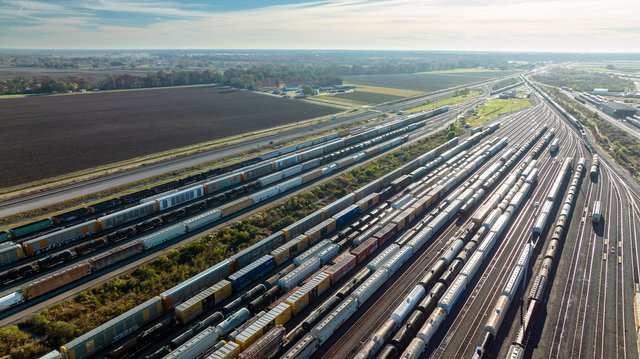
October 8, 2025
Fewer Stops, Faster Service: The Future of Freight Rail

Union Pacific applies that same principle to moving freight, leveraging data and tech tools to reduce shipment “layovers” that ultimately improve train speed and service consistency for customers.
Adaptive planning is key to navigating our complex rail network, and tech tools like Block Optimizer are helping us do it more effectively. One of the biggest advantages is reducing car touches— the number of times rail cars are handled during transit. Each touch removed is like skipping a flight layover, saving roughly 24 hours in transit time.
Block Optimizer combines our team’s expertise with machine processing to identify opportunities to group rail cars earlier in their journey. This enables more optimized routes and helps minimize re-sorting at terminals across our 23-state network— and in some cases, enables rail cars to skip terminals entirely. Our Service Design group works closely with field teams and the Harriman Dispatching Center, using real-world experience and data to simulate scenarios to improve performance.
Since 2023, we’ve eliminated more than 7,000 daily car touches systemwide— saving customers 168,000 hours in transit time every single day. Tech tools like Block Optimizer act like another set of eyes, helping us keep freight moving safely and efficiently.
The benefits go beyond speed. Fewer touches free up valuable terminal capacity, making room for more rail cars. That’s where adaptive planning becomes a growth engine. When you remove stops, you don’t just make trains faster— you make room for more business. Every car that can move straight through the network without needing reclassification opens up space in a terminal for cars that truly need it.
Block Optimizer is just one of the first steps in Union Pacific’s adaptive planning approach. The evolution continues with Train Optimizer, shifting focus from grouping cars into blocks to building blocks into full trains. It looks at the bigger picture— recommending how blocks should be grouped. By right-sizing trains, we can move more freight with fewer trains, reducing costs while continuing to improve service for customers.
Looking ahead, experimental tools like Bowl Planner are working hand-in-hand with adaptive planning technology to help terminal teams build better blocks in real time.
For customers, that means faster, more reliable deliveries. For Union Pacific, it means a network that can scale and grow with demand. The fewer stops you make, the shorter your journey— and in railroading, just like in flying, that makes all the difference.